
Tel Aviv University
Abstract: Fundamental bounds on electromagnetic scattering from subwavelength structures play an important role in estimating the performances of many wireless communication devices. An appealing approach to increasing a scattering cross-section is accommodating several spectrally overlapping resonances within a structure. However, numerous fundamental and practical restrictions have been found and led to the formulation of Chu-Harrington, Geyi, and other limits, which provide an upper bound to scattering efficiencies. Here we demonstrated several superscatterer designs and their implementations, which allow surpassing those limits by orders of magnitude. Genetic algorithms for optimizing arrays of wires and split ring resonators were developed and resulted in ever-observed performances. Apart from the fundamental importance, the developed superscatterers can serve as chaff elements for deceiving low-frequency radars by creating multiple highly scattering artificial targets.
Our additional strategy for radar deception is temporal modulation. Dynamic control over a reflected wave phase makes it possible to deny an interrogating radar system from obtaining the instantaneous velocity of a moving object. Furthermore, this approach allows for creating an impression that a stationary object is moving. By temporally modulating the voltage, the Doppler phase shift produced by the motion of the scatterer can be completely compensated, creating the illusion that the moving target is stationary. Similarly, by properly modulating the scattered phase in time, Doppler and micro-Doppler shifts can be produced in the resulting echoes, which can deceive the investigating system. The proposed method opens the door for the use of smart time-dependent materials for passive jamming applications.
Bio: Pavel Ginzburg is an Associated Professor at Tel Aviv University. He is a former EPSRC Research Fellow, International Newton Research Fellow, and Rothschild Fellow at King’s College London. He obtained all of his degrees in Electrical Engineering at Technion and took a part in the Technion Excellence Program. He received his Ph.D. from Technion in 2011 on the special “Clore Scholars Programme” course. In his research, he was also involved in the discoveries of several novel phenomena and it was awarded the “Hershel Rich Innovation Award”. His Ph.D. thesis was awarded by QEOD Thesis Price for Applied Aspects (EPS). Nowadays, Pavel holds a prestigious Alon Fellowship, designated for young faculty members. Pavel Ginzburg is the head of ‘The dynamics of Nanostructures Laboratory, encompassing theoretical group, optical spectroscopy, and radio waves labs. The Laboratory runs multidisciplinary research in the field of Optics, Biophotonics Quantum Mechanics, Solid State Physics, Nano-plasmonics and Metamaterials, Optical Forces, and Radio Physics. Pavel Ginzburg has authored 135 journal papers, over 200 conference presentations, and 5 patents. He is a co-founder of 2 start-up companies.
Abstract: This talk will present recent progress in our group in the development of new designs and technologies for reconfigurable met surfaces and antennas at mm-wave and low THz bands
Bio: Alexandros Feresidis is a Professor of Microwave and Terahertz Communications and also Head of the Metamaterials Engineering Laboratory. He leads research on electromagnetic metamaterial structures, antennas, microwave, mm-wave and THz circuits. He is an expert on the analysis and design of artificial periodic metamaterials/metasurfaces, electromagnetic band gap (EBG) structures and frequency selective surfaces (FSS), high-gain and base station antennas, leaky wave antennas, small/compact antennas, computational electromagnetics, microwave/mm-wave/THz circuits and bio-electromagnetic systems.
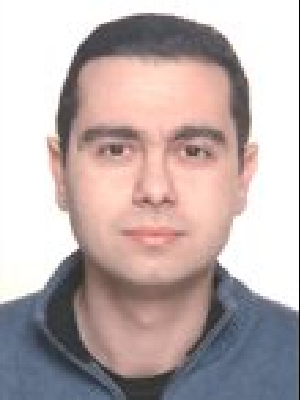
University of Birmingham
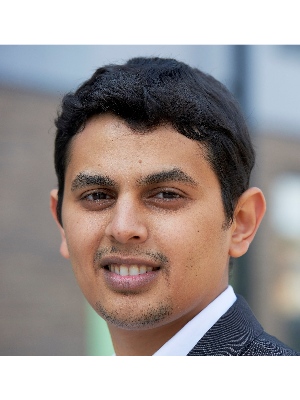
Queen Mary University of London
Abstract: Terahertz (THz) metasurface biosensors have attracted considerable attention in thin-film biological sensing due to their real-time and ultra-sensitive detection properties. This talk introduces a planar array of split-ring resonators (SRRs) over a dielectric substrate to study its performance for having a highly sensitive, non-label, and low-cost biosensor. By coupling the two SRRs of each unit cell, a pick in the transmission spectra occurs at 1.58 THz. Analyzing the electromagnetic field distribution and surface current flow shows the appearance of coupled electric and magnetic dipoles in the resonators. It is also shown that changing the distance between the coupled SRRs can passively tune the resonance frequency. Finally, the sensing functionality of the metamaterial is validated by simulating a human skin tissue with a refractive index of 1.6 and a thin thickness of 6 μm. The results give a remarkable theoretical sensitivity of 400 GHz/RIU. We will also present some preliminary experimental validations.
Bio: Akram Alomainy is the Deputy Dean for Postgraduate Research in the Faculty of Science and Engineering, Head of the Antennas and Electromagnetics Research Group and Reader in Antennas & Applied EM. Associate Editor for IEEE AWPL and IEEE J-ERM. Lead of Wearable Technology and Creativity Research. Research portfolio ranging from the basics of antennas and electromagnetism to novel applications in tele-robotics, cognitive radio, wearable electronics, nano-scale networks, healthcare and bioenigneering. Member of the Centre for Intelligent Sensing and Institute of Bioengineering. Over 450 publications in leading journals and international conferences (8800+ citations and H-index of 43). Recipient of the 2011 British Science Festival Isambard Kingdom Brunel Award, recipient of the QMUL Education Excellence Award 2019, participant at ‘I’m a Scientist! Get me out of here’ March 2012 and TEDx 2012 Speaker. Chartered Engineer, College member of EPSRC, Senior member of IEEE and member of IET.
Abstract: This talk will cover 3D printed metamaterials for microwave applications. We will discuss the printable dielectric properties, how they can be printed effectively, measuring their dielectric properties, how they can be exploited for RF applications. We will also show results from 2D metasurfaces.
Bio: Prof. Whittow is a Professor in Radiofrequency Materials and Head of the Wireless Communications Research Group. He has > 20 years of experience in RF devices and materials. He became a Lecturer in 2012, a Senior Lecturer in 2014, a Reader in 2018 and a Professor in 2020. He has specialist expertise in metasurface, metamaterials, 3D printed RF devices, measurement of dielectric properties, inkjet printed antennas, RFID tags, and wearable antennas.
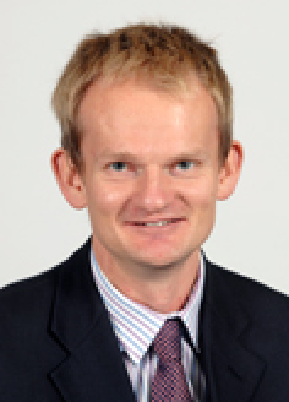
Loughborough University
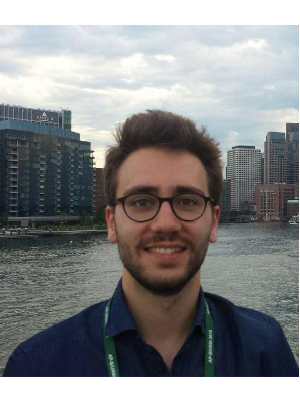
Université de Rennes
Abstract: I will discuss some of our recent work on molding the flow of information through tailored wave-matter interactions in order to extract, process and transfer information.
Bio: Philipp del Hougne is a tenured CNRS researcher affiliated with the Université de Rennes 1, France. He graduated in physics from Imperial College London, United Kingdom, and was awarded a doctorate by Université Sorbonne Paris Cité, France. He subsequently held postdoctoral positions in Nice and Rennes, France, and Lausanne, Switzerland. He currently leads the Intelligent Wave Systems group at CNRS – IETR (Université de Rennes 1), France, which combines programmable-metamaterial hardware with artificial-intelligence algorithms and mesoscopic-scattering theory to mold the flow of information through tailored wave-matter interactions for information extraction (imaging, sensing, localization), information processing (analog wave-based computing), and information transfer (wireless communications).
Abstract: I will present our team’s theoretical and experimental results on near-field directionality of point sources, such as circularly polarised dipoles exciting nearby waveguides only in one direction, and related near field phenomena such as so-called Huygens and Janus dipole directionality in the near field. These concepts were developed in the nano-optical domain, but apply to the whole electromagnetic spectrum and we are looking for microwave-related approach.
Bio: Francisco José Rodríguez-Fortuño is a Lecturer at King’s College London, where he carries out research on the topics of plasmonic devices, nano-optics, optical forces, optical nanoantennas, metamaterials and novel electromagnetic phenomena. After obtaining a degree in Telecommunications Engineering in 2008 at the Universitat Politècnica de València (UPV), Spain, he carried out his Masters’ and PhD studies at UPV in the topic of plasmonic metamaterials. During his PhD, Francisco spent 9 months as a visiting researcher at the University of Pennsylvania, USA, 2011 under the supervision of Prof. Nader Engheta and 7 months at King’s College London, UK, 2012, under the supervision of Prof. Anatoly Zayats and Dr. Gregory Wurtz, where he later worked as a Postdoctoral Research Assistant in 2014 and obtained a Lecturer position in 2015. Francisco has authored or co-authored 25 research papers and contributed 38 works at international conferences.
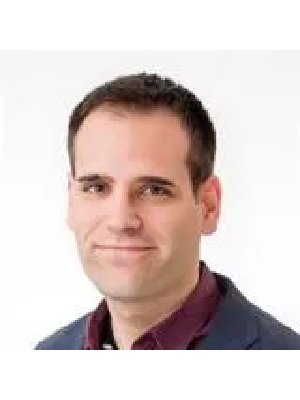
Kings College London
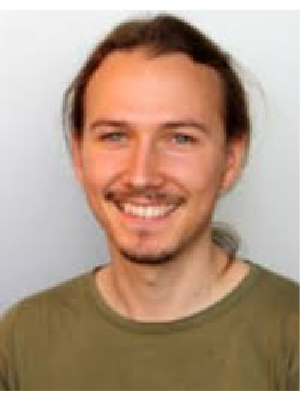
University of Exeter
Abstract: Most previous work on metamaterials has considered them as purely spatial arrangements of matter. But what about materials that are structured in time as well as space? These offer the possibility for tailoring the frequency spectrum of an incident wave, something which is impossible with a static linear material. Yet, it is a theoretical challenge to describe time varying materials, because they are inevitably also dispersive. In this talk I will illustrate a new theoretical approach to describe EM waves in dispersive time varying materials, where the continuous wave reflection and transmission coefficients are replaced with operator expressions that modify the spectrum of any incident wave. In addition to comparing this approach to existing numerical and analytical techniques, we find that the eigenfunctions of these operators represent pulses that do not change their spectra after interaction with the time-varying, dispersive material. In addition, the poles of these operators represent the non–time harmonic bound states of the system.
Bio: I am a theoretical physicist funded by a Royal Society TATA Fellowship, working at the University of Exeter on wave physics. In recent years I’ve been looking at the application of topology, graded loss and gain, inverse design techniques, and time variation in metamaterial design.
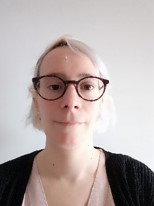
University of Bath
Abstract: Wireless Medical Devices usage increased significantly in the last decade. There are still challenges to be able to transmit efficiently a RF signal from or through a biological tissue. I will discuss how RFID is actually a technology which fits well the requirements of medical devices. It will cover UHF RFID, NFC and CRFID.
Bio: I received an MSc from the National School of Civil Aviation (ENAC), Toulouse, France, in 2007 and my PhD in Electromagnetics in 2011 from the University of Toulouse. I have held different positions in academia and industry designing antenna for a wide range of applications and frequencies. I am now a lecturer in Engineering Design at the University of Bath.
Abstract: In this talk, I will discuss about the work on intelligent reflective surfaces in our group and different testbeds and their results with emphasis on healthcare.
Bio: Qammer H. Abbasi (SMIEEE, MIET, FRET, FRSA), Dr Abbasi is a Reader with the James Watt School of Engineering, University of Glasgow, U.K., deputy head for Communication Sensing and Imaging group (110+ researchers), deputy theme lead for Quantum & Nanotechnology in the University’s Advance Research Centre, Co-Manager for RF and terahertz laboratory. He has grant portfolio of £7M+ and contributed to more than 450+ leading international technical journal and peer reviewed conference papers including Nature portfolio and 10 books.
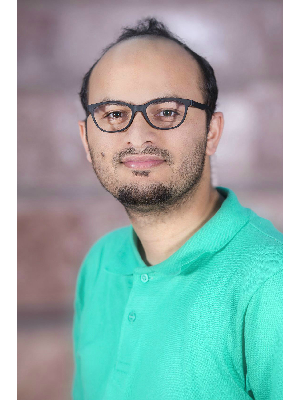
University of Glasgow
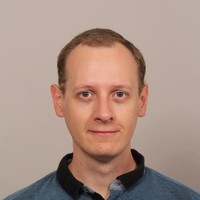
University of Exeter
Abstract: Research on miniaturisation of optical systems has, in the last decade, mainly focused on reducing the size of bulk optical elements such as lenses and mirrors. Only recently it became known that the distances between optical elements can be reduced as well. In the talk we will discuss how a single Fabry-Perot cavity can accomplish such a task, focusing on the theoretical and practical limits, and we will present experimental results of a space compression element.
Bio: Bio: Michal Mrnka received the Ing. (M.Sc.) and Ph.D. degrees in electronics and communications from Brno University of Technology, Czechia in 2013 and 2017, respectively. In his doctoral thesis he focused on higher order mode dielectric resonator antennas and analysis of perforated dielectrics in microwave applications. Between 2015-2017 he worked as a lead antenna engineer at ERA a.s. (Pardubice, Czechia), developing antennas for passive multilateration surveillance systems. In 2017 he joined the European Space Research and Technology Centre, European Space Agency, Noordwijk, The Netherlands, where he was involved in instrumentation for (sub-)millimeter-wave material characterization and compact antenna test range measurements. He is currently a research fellow with the University of Exeter working on microwave and terahertz computational imaging.
Abstract: For RF energy harvesting applications, it is very desirable for an antenna to have both a high gain and a wide beamwidth. Usually, they cannot be achieved simultaneously. In order to overcome this limitation, a multi-port antenna using a nonuniform metasurface (MTS) is presented. Three modes with complementary radiation patterns are excited. By combining the DC outputs to a single load, effectively an antenna with a wide beam and a high gain can be achieved, although each mode has the usual limitation of gain and beamwidth.
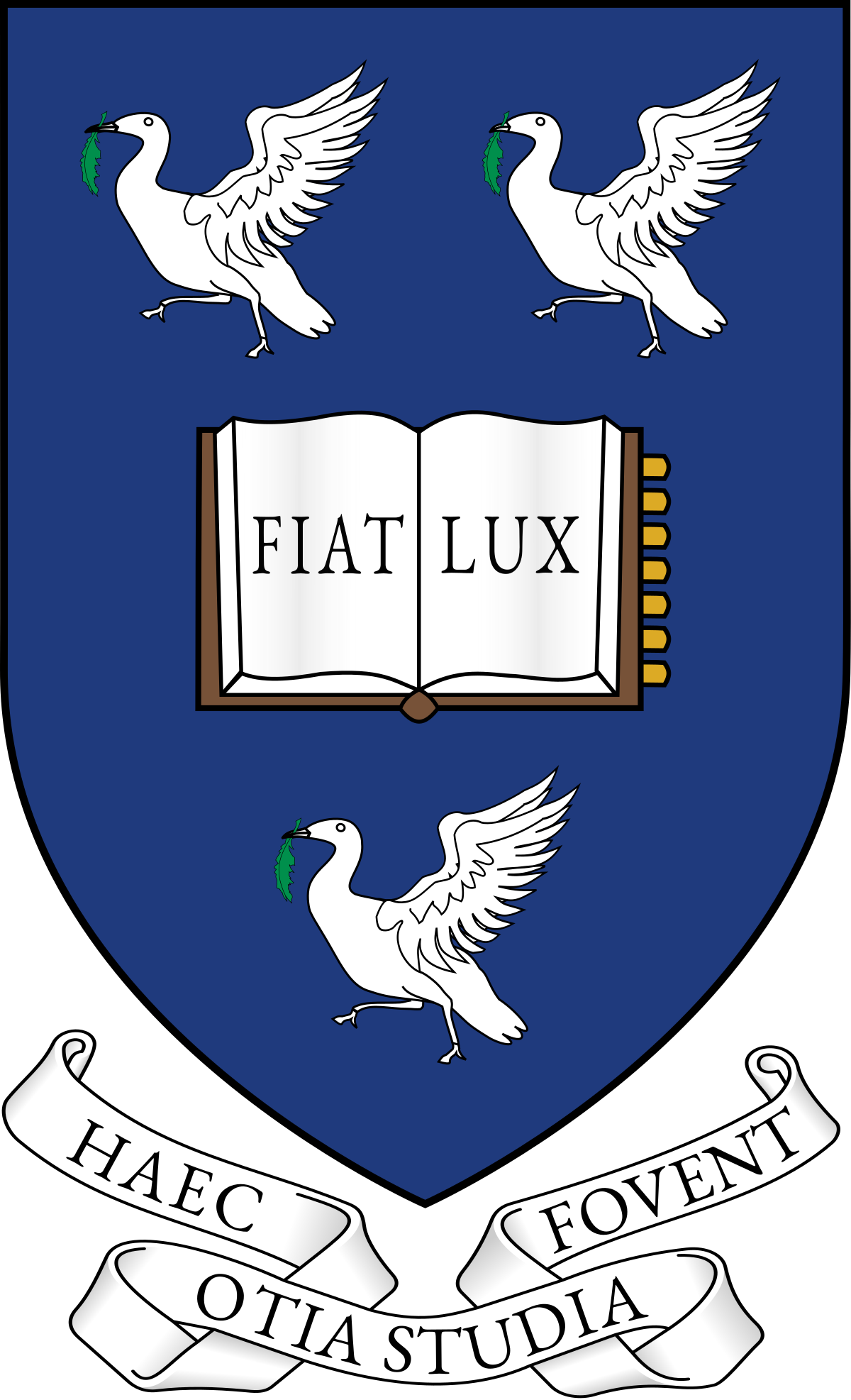
University of Liverpool
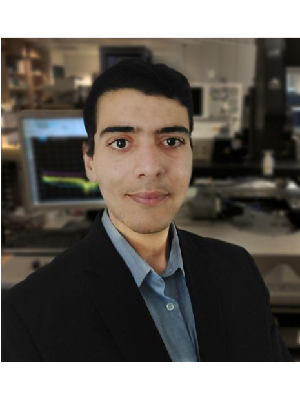
University of Glasgow
Abstract: Emerged in the 1960s, microwave wireless power transmission (WPT) is by no means an emerging technology. Yet, its real-world applications were off to a slow start, hindered by practicalities ranging from efficiency to safety regulations. From antenna-circuit co-design to large-area RF (<10 MHz to 20+GHz) energy harvesting arrays, an overview of our recent work on WPT will be presented. Finally, novel use-cases where a metamaterial and a meta-device could transform WPT will be discussed.
Bio: Mahmoud Wagih is a UK IC Research Fellow and Proleptic Lecturer at the University of Glasgow. He received his PhD in rectenna design in 2021 from the University of Southampton, named Best in Antennas and Propagation in Europe. His interests cover RF power transmission, flexible and printed RF materials, and sustainable electronics systems, and has published over 60 papers on these topics. He is an affiliate member of the IEEE Microwave Theory Techniques technical committees on wireless power transfer and on RFID/IoT, and has received over 15 research awards.
Bio: Dr Mohsen Khalily is a Associate Professor in antennas and propagation and head of Surface Electromagnetics Lab (SEMLAB) at the Institute for Communication Systems (ICS), University of Surrey, U.K. His research interests include surface electromagnetics, electromagnetic engineered Metasurfaces, phased arrays, THz Metadevices, and mmWave & THz propagation. He has published 4 book chapters and almost 160 academic articles in international peer-reviewed journals and conference proceedings and has been the principal investigator on research grants totalling in excess of £1million in the field of surface electromagnetics. He is an IEEE Senior member, delegate member of the ETSI Industrial Specification Group (ISG) on Reconfigurable Inteligent Surfaces, and a fellow of the U.K. Higher Education Academy. He was a Lead Guest Editor in several journals, including IEEE Antennas and Wireless Propagation Letters and IEEE Open Journal of Antennas and Propagation with the focus on Metasurface engineering.
University of Surrey
Abstract: TWI is a world leading RTO with expertise in welding, joining and structural integrity. We have been active in surface engineering and coatings research for >30 years. We offer a wide range of processes applicable for manufacturing metasurfaces. Current activities active include development of a diverse range of functional coatings, including EMI and lightning strike protection applications, SurFlowTM data transmission through composites, as well as leading the development of novel metasurface manufacturing methods for wind turbine applications funded by DSTL.
Facilities include large scale mechanised surface preparation and coating facilities, composite manufacturing, laser processing, additive manufacturing and inspection capabilities, combined with extensive materials and surface characterisation, analysis and functional testing.
TWI has strong links to academic research to support technologies at TRL1-3, alongside manufacturing process and procedure developments to take technologies to TRL4 and above. Technologies can be demonstrated on representative components within our large scale facilities, supported by offline programming/simulation and multiple inspection capabilities for process validation and quality assurance. TWI’s membership base & links with wider industry supply chains enable rapid technology transfer to end users.
Bio: Dr Melissa Riley, CEng, FIMMM, Consultant for Surface Engineering, has extensive knowledge of thermal spraying technology. She has significant experience in both the development of spray processes and the characterisation, properties and performance of materials deposited by these techniques, as well as significant knowledge of other coating and surface engineering technologies for a wide range of industrial applications. She has been instrumental in the development of TWI’s surface engineering facilities to enable industry focussed, applied R&D at higher TRL/MRL scales, for TWI Industrial Members. This has included several high profile projects, relating to upscaling and manufacturing development of thermal spraying technologies for composite structures. Melissa is a Fellow of the Institute of Materials, Minerals and Mining (FIMMM), and a Chartered Engineer (CEng). Melissa is also a member of the Management Committee for the UK Thermal Spraying and Surface Engineering Association which issues the Code of Practice for Thermal Spraying, and also BSI STI/040 Thermal Spraying and Thermally Sprayed Coatings Committee.
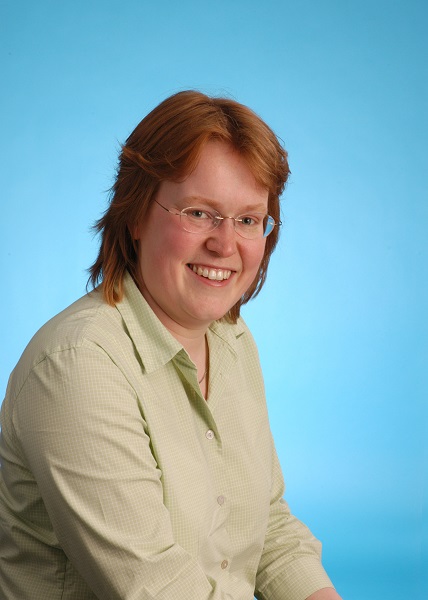
TWI
Saint Gobain
Abstract: Radomes are weatherproof enclosures for the protection of antenna and radar systems. Ground-based radomes are large quasi-spherical domes made of dielectric panels and mechanical seams. While necessary for structural stability, the seams induce spurious scattering effects which reduce the transparency performance of the radome. In this work, dielectric radome seams are camouflaged with respect to a reference radome panel by integrating judiciously designed metasurfaces within the seam’s volume. This technique, called metasurface-tuning, is analytically introduced, and applied to realize several proof-of-concept metasurface-tuned seams. Near-field and far-field measurements are performed on the prototypes and experimental validation of the camouflage effect is achieved in S-, C- and X-bands. Polarization stability, angular robustness (up to 45°) and dual-band capabilities of the proposed concept are demonstrated. The relatively low cost, easy implementation and scalability of the proposed metasurface-tuned seam design make it an attractive industrial solution to improve the performance of radomes as well as various RF systems affected by spurious mechanical pieces.
Bio: Riccardo Cacocciola is a research engineer at Saint-Gobain Research Paris where he works on the functionalization of radome structures for ground-based and airborne applications. He has an engineering degree in Materials and Nanotechnologies from Denis Diderot Engineering School (Paris, France), a master’s degree in Quantum Devices from Polytechnique (Paris, France) and has recently obtained his PhD in applied Physics from Paris Nanterre University (Paris, France) for his work on RF metamaterials for radome applications.